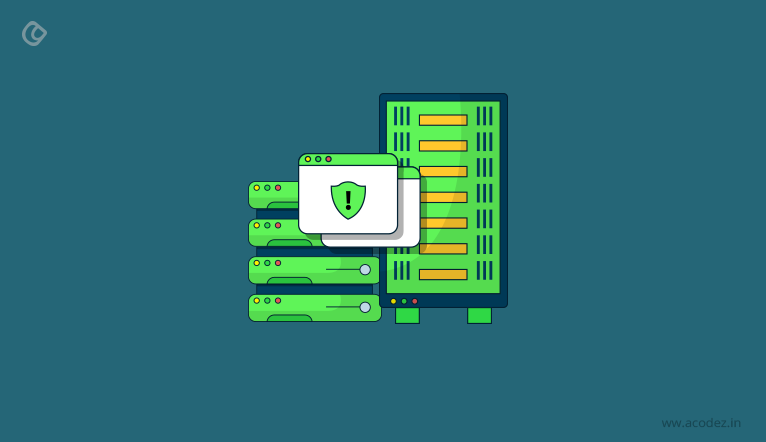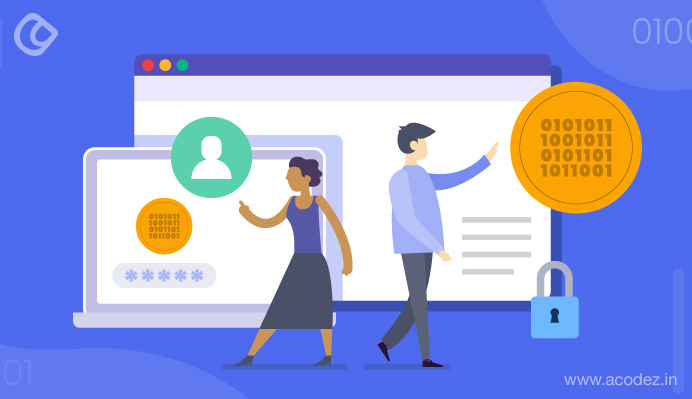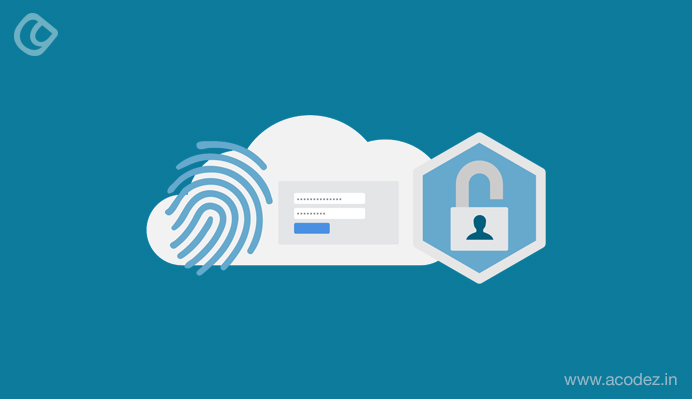Evolution of mobile apps development is something we all wondered. One of the challenges in mobile app development is security. Whenever you create a mobile app for business, it is important to ensure that it is secured against any kind of cyber attack that can happen at any time, anywhere. In case of a security breach, your business or brand is under the threat of its reputation being exploited. It is important to ensure that all your users’ data are safe and secure in the app.
If you fail to ensure the security of your users’ data, it might get manipulated or stolen and be used for some other purposes without their knowledge, which could be hazardous to them. Or if your app is not safe, there are possibilities that it might get affected by a virus or get cloned. And sometimes, a similar app might be launched, which would pose a threat to your app. This means you have spent all your time, resources and effort on developing something that went on to be copied by someone else for a similar purpose.
Unless there are proper security measures adopted, the app is in the danger of being manipulated, which is a concern. And because the number of apps being launched is more these days, it is important to protect each of them from various kinds of vulnerabilities that seem to affect them. Mostly, hackers decide to target mobile apps in order to get their hands of customer’s personal information and use it.
Here we have listed some tips to help you secure the app against breaches:
Eliminate Weak Server-Side Controls

All communication between an app and a user, which occurs outside a mobile phone, is mainly happening through a server. This is why servers become the main point of a target for hackers. You can always ensure server-side security to protect your app. Either you can always hire a specialized security expert in-house to test a tool by implementing general precautions.
In case the developer doesn’t take any traditional server-side precautions under the account, security issues pop up. This could arise mainly because of tight security budgets. Sometimes, when the developer has little or no knowledge about the security controls of the programming language in which they are developing the app. Otherwise, there is too much dependability on the mobile OS for security updates and responsibilities, which is causing an issue. Sometimes, vulnerabilities arising from cross-platform development and compilation could also lead to security concerns.
You can always secure your mobile apps from server-side vulnerabilities by scanning them. You can scan your apps using an automated scanner. With an automated scanner, you will be updated about the vulnerabilities that might affect your app. Always remember to do this because in case you miss out on scanning, the hackers can easily find loopholes and hack your app. You can always hire cybersecurity experts to help you secure your app.
Is Your Data Storage Insecure?
If your data storage lacks security, then here there is another vulnerability that might be misused. Usually, developers depend upon the client storage to secure data. Remember that client storage might not provide a sandbox environment for securing your data and hence a security breach might happen at any time. In any case, the data can be accessed with ease, manipulated and used. All this can lead to identity theft, external policy violation, and even reputation damage.
In these cases, you can always secure your data storage across a number of platforms by providing an additional layer for encryption over the already existing encryption that is provided by the operating system. With this, you can ensure a huge boost to the security of your mobile apps, while also bringing down its dependence on the default encryption.
Data Leakage that is Unintended

With unintended data leakage, we refer to the storage of critical app data across insecure locations on mobile. You will find that the data has been stored within a location on the device, which can be easily accessed by other users or apps.
This could ultimately lead to a breach of user privacy. And the end result would be unauthorized use of data. Usually, this kind of scenario arises when people are not clear about data leakage that is unintended along with data usage that is unauthorized. Most of the time unauthorized data leakage happens mainly because of OS bugs or due to security issues within the storage, out of the security scope of the framework.
Unintended data leakage is usually in control of the knowledge of the developer. It can be easily prevented by keeping a track of common leakage points, such as logging, caching, app backgrounding, browser cookie objects and HTML5 data storage.
Using High-Level Authentication Could be Helpful

One of the highly recommended ways of securing your mobile app is using an authentication mechanism. A weak authentication can lead to vulnerabilities in mobile apps. This is always one of the most important security points and vulnerabilities of an app.
Authentication can be ensured through a password. Hence, it is essential that you have a strong password policy, which cannot be hacked with ease. With multi-factor authentication, you can secure your app. You can use OTP login or authentication code via emails to secure your app. You can also do these using biometrics.
Poor Authentication or Authorization

When the authentication is either poor or missing, it would open up a loophole for an adversary to operate via the mobile app or backend server of the mobile app. This could arise mainly because of the device’s input form factor. Such a poor form factor would merge out of short passwords, which arise from four-digit PINs.
When it comes to conventional web apps, we cannot expect mobile app users to stay online until the end of a session. You will find that mobile internet connections might not be as trustworthy as the conventional web connections that are available. This is why it is important that mobile apps also allow offline authentication to maintain uptime. Such offline requirements would lead to security breaches. Developers should keep this in mind when they are implementing mobile authentication.
It is possible that an attacker would force or attempt to break the security measures on the logins while in the offline mode and take control of the app. While in the offline mode, apps do not have the intelligence to understand the difference between an actual user and a hacker, this would lead to opening up the gateway to permissions to all users. Now, all users have the power to execute actions, which can usually be performed by admins or super admins.
If you want to prevent sensitive information from being lost, it is always ideal to limit login attempts to just the online mode, rather than extending it to the offline mode. In case if you have a special business requirement where you would need to provide offline authentication, then provide encryption on your app data – such that it can be accessed only using certain permissions.
Client-Side Injection
Just as we discussed how you might have a wrong idea about the security of your information on both the client as well as the server-side, similarly there is also a possibility of the execution of malicious code on the client-side via mobile device or the app.
In fact, there are threat agents that input the malicious code within the mobile app via different means. Most of the times, underlying frameworks that support the mobile app happen to process this code similar to other data that exist on this device. While processing, this code will lead to context switch and the framework might reinterpret any data as executable data. It would happen that this data would run within the scope and access permissions of the users. This kind of data can also be executed with the necessary permissions, which would lead to further disaster.
Also, injection on the client side might happen via binary attacks. You can prevent such app vulnerabilities to injections by identifying the sources of input. Then, identify the user or app supplied data, which is subject or prone to input validation, disallowing code injection. Also, you can keep a check on the code to validate whether the app is handling data appropriately to ensure the app’s security.
Providing Least Privileges
This would be necessary for your app code security. It is required that you provide access to the code to those who need to receive them and the rest need not be given any of these privileges, while also keeping them to a minimum. It is best to keep the network as less as possible.
Test Repeatedly

One of the simple solutions for an app is to test repeatedly for changes that happen day by day. It is important that you stay updated with the security trends to secure your app. Testing it regularly will help you understand better if there are any vulnerabilities.
Acodez is a leading mobile app development company in India. We offer all kinds of web development and web design services as well. We are also a renowned digital marketing agency offering SEO, SMM, SMO services to boost your online business.
Looking for a good team
for your next project?
Contact us and we'll give you a preliminary free consultation
on the web & mobile strategy that'd suit your needs best.











